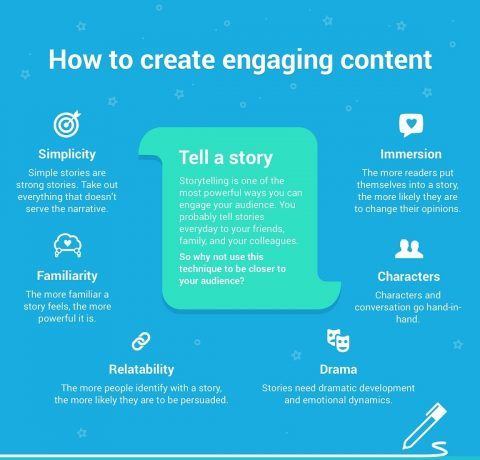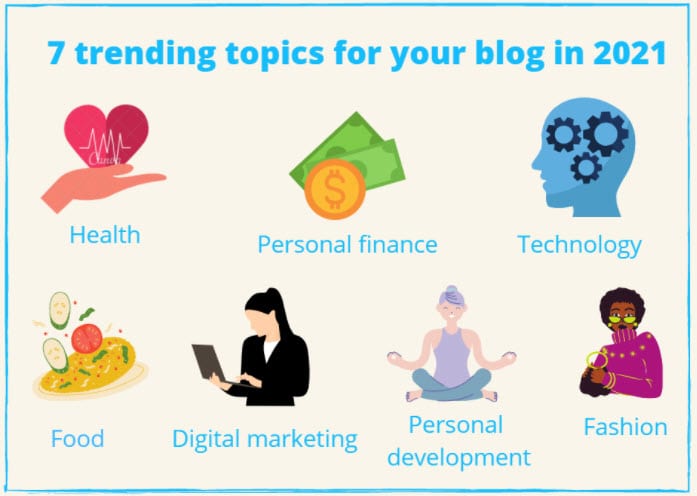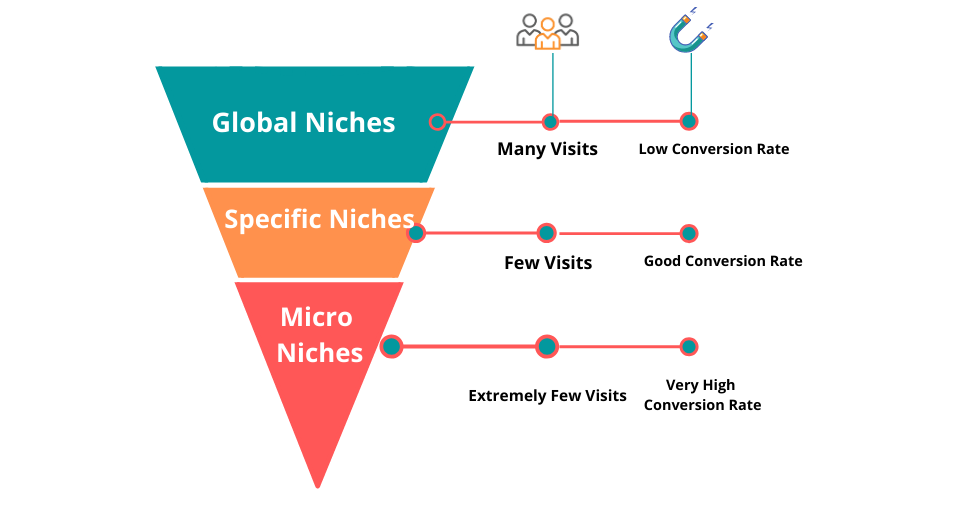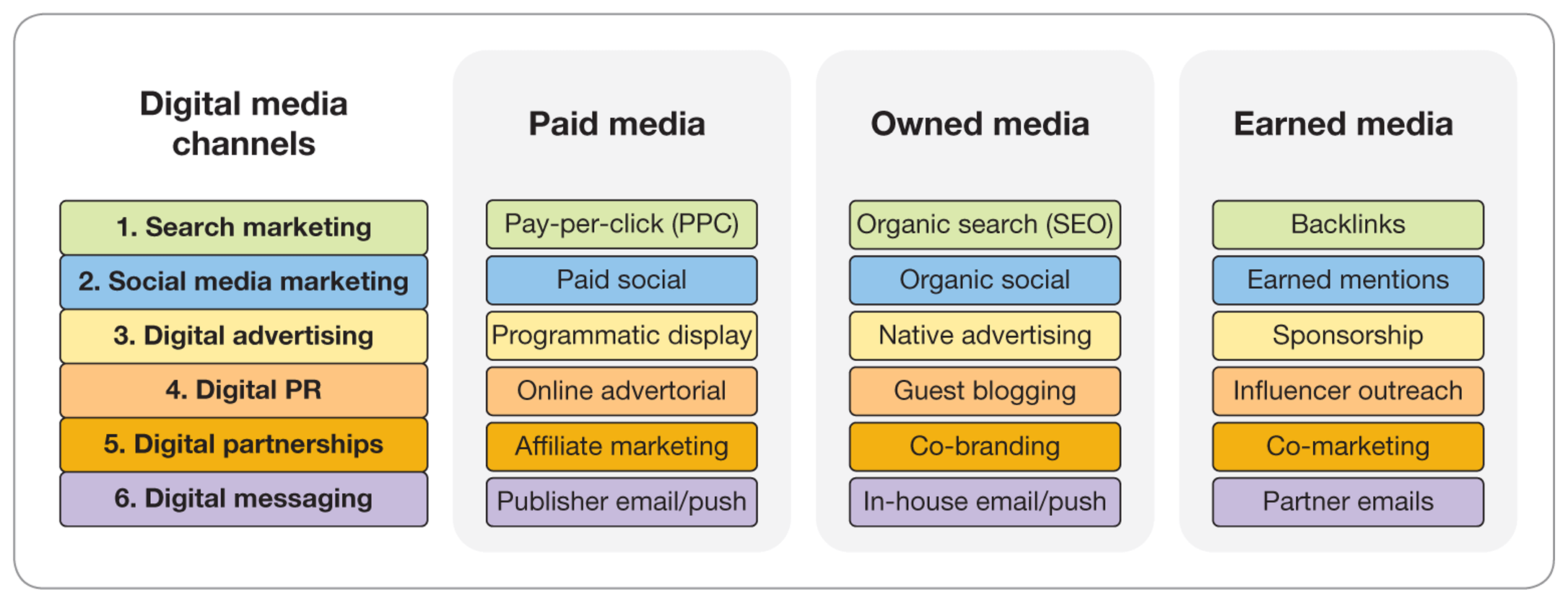Creating engaging content starts with understanding your audience’s needs. You need to connect with them emotionally and intellectually.
This involves crafting messages that resonate and provoke interest. In today’s digital world, content is king. But not all content captivates audiences. Engaging content draws readers in, making them want to read more, share, and interact. It involves storytelling, creativity, and authenticity.
It’s about presenting information in a way that sparks curiosity and conversation. Whether you’re writing a blog, designing a video, or crafting social media posts, the key is to be relatable and thoughtful. Knowing your audience and delivering value is crucial. This guide will explore strategies to create content that truly engages, offering insights on techniques that work across various platforms. Dive in to transform your content creation approach.

Credit: mauconline.net
Crafting Compelling Headlines
Crafting compelling headlines captures readers’ attention quickly. Short, catchy phrases work best. Use simple words to make your point clear.
Creating engaging content starts with crafting compelling headlines. A headline serves as the first impression of your content. If it fails to capture attention, the rest of your work may go unnoticed. How do you ensure your headline stands out in a sea of information? Let’s dive into the essentials of writing headlines that draw readers in and keep them hooked.Power Of A Great Title
A great title is your golden ticket to capturing attention. Imagine scrolling through endless posts; what would make you stop? A title that resonates, sparks curiosity, or promises value. Consider this: “How to Save Money” versus “10 Genius Ways to Save Money This Month.” The latter not only promises specific insights but also creates an urgency to read further. The power of a great title lies in its ability to pique interest instantly.Using Keywords Effectively
Using keywords effectively is crucial for visibility. But it’s more than just adding popular words. It’s about understanding what your audience is searching for. Think of your audience’s needs. If they are searching for “quick dinner recipes,” your headline should reflect that. “5 Quick Dinner Recipes You Can Make in 30 Minutes” directly addresses their query while setting expectations. Remember, keywords should flow naturally. Overstuffing makes your title awkward and less appealing. Strike a balance between relevance and readability. Crafting compelling headlines requires creativity, strategy, and a deep understanding of your audience. Are your titles inviting enough to make someone pause and click? Start experimenting with different styles, and watch your engagement soar.
Credit: elearninginfographics.com
Understanding Your Audience
Creating engaging content begins with knowing your audience. Understand their interests and preferences. Craft messages that resonate with them. Use simple language and clear ideas to connect effectively.
Creating engaging content starts with understanding your audience. Knowing who you’re talking to is the cornerstone of crafting messages that resonate. This isn’t just about demographics; it’s about tapping into the emotions, needs, and preferences of your readers. Imagine writing a story for a friend—you’d naturally tailor your words to match their interests. Why not apply the same principle to your content creation?Identifying Audience Needs
Getting to know your audience is like peeling back the layers of an onion. Start by asking: What problems are they facing? What keeps them up at night? Dive into forums, social media, and comments to uncover these insights. When I wrote my first blog, I imagined myself talking to a curious friend, eager to learn but unsure where to start. This perspective helped me pinpoint topics that mattered. Use surveys and polls to gather direct feedback. You’ll be surprised at how willing people are to share their thoughts. By identifying their needs, you can address them directly in your content. This not only captures attention but also builds trust.Tailoring Content To Preferences
Once you know what your audience needs, shape your content to match their preferences. Consider the format they enjoy—are they podcast lovers or avid readers? Adjust your style accordingly. When I noticed my readers preferred bite-sized information, I switched to bullet points and lists. The engagement soared. Be mindful of tone and language. If your audience is young and vibrant, adopt a casual, lively tone. If they’re professionals seeking solutions, opt for a more formal approach. Tailoring your content makes it feel like a conversation rather than a lecture. Experiment with different types of content, like videos, infographics, and blogs. It’s about finding what clicks. When you cater to their preferences, you create content that feels personalized, making them more likely to return for more. Are you truly listening to your audience’s needs and preferences? Taking the time to understand them transforms your content from generic to genuinely engaging.Storytelling Techniques
In the digital age, captivating your audience often hinges on how well you tell your story. Storytelling techniques are essential for crafting content that resonates with readers. Whether you’re writing a blog post, creating a video, or drafting an email, a compelling story can be the key to capturing attention and driving engagement.
Creating Narrative Arcs
A narrative arc is the backbone of a good story. It guides your audience through a beginning, middle, and end. Imagine reading a book without a plot – it would be confusing and uninteresting.
Think about your favorite movie. What made it memorable? Chances are, it had a well-defined narrative arc. Use this same principle in your content to keep readers hooked.
Start with a clear introduction to set the scene. Lead into a conflict or challenge, then resolve it with a satisfying conclusion. This method keeps readers invested in your message.
Building Emotional Connections
Emotions drive engagement. When you evoke feelings, whether joy, sadness, or curiosity, you create a bond with your audience. This connection makes your content memorable.
Consider your own experiences. What stories have left a lasting impact on you? It’s likely those that made you feel something profound. Aim to replicate this in your content.
Ask yourself, “What emotion do I want my audience to feel?” Then weave that emotion into your narrative. This approach not only captures attention but also encourages sharing and interaction.
As you refine your storytelling techniques, remember: a good story isn’t just about telling; it’s about engaging. How will you make your next piece of content unforgettable?

Credit: www.topclick.com
Utilizing Visual Elements
Visual elements play a crucial role in content creation. They enhance understanding and retention. Images, infographics, and videos capture attention quickly. They make content more appealing and digestible. Let’s explore how to use these visual tools effectively.
Choosing The Right Images
Images speak louder than words. Select images that align with your message. They should be clear and relevant. High-quality visuals build trust and credibility. Avoid overused stock photos. Choose unique and authentic images. Real-life photos connect better with the audience. Consistency in style enhances your brand identity.
Incorporating Infographics
Infographics simplify complex information. They present data in a visual format. This makes it easier to understand. Infographics are shareable. They often go viral. Use them to highlight key statistics. Ensure they are visually appealing. Keep the design clean and organized. Avoid clutter with too much text. Use colors to emphasize important points. This draws attention to essential information.
Optimizing For Seo
Crafting content that captivates involves understanding your audience and using clear language. Incorporate keywords naturally to enhance SEO. Mix facts with storytelling to maintain interest and improve engagement.
Creating engaging content that resonates with your audience is a vital skill in today’s digital world. But equally important is ensuring that your content is visible and discoverable. This is where optimizing for SEO comes into play. SEO, or Search Engine Optimization, is about making your content appealing not just to readers but also to search engines like Google. This section will guide you on how to achieve that balance, ensuring your content reaches the widest possible audience.Best Practices For Seo
To optimize your content for SEO, start with keyword research. Identify what terms your audience is searching for and naturally integrate these into your content. Tools like Google Keyword Planner can be invaluable for this. Use headings and subheadings strategically. They help structure your content and make it easier for readers and search engines to understand. Ensure that your primary keyword appears in at least one of your headings. Meta descriptions and alt text are often overlooked but crucial. Write compelling meta descriptions that include your keywords to improve click-through rates. Use alt text for images, so they appear in image searches and improve accessibility.Balancing Seo And Readability
While SEO is crucial, readability should never be sacrificed. Your primary audience is human, not robots. Write in a conversational tone, and use simple language that your audience can relate to. Avoid keyword stuffing. Overusing keywords can make your content look spammy and deter readers. Aim for a natural flow, where keywords fit seamlessly into the text. Engage your readers with questions and direct language. Ask yourself: Is my content easy to read? Does it provide value? If your answer is yes, you’re on the right track. I once spent hours perfecting a blog post, only to find it didn’t rank well because I had focused too much on SEO. Remember, balance is key. Strive for content that is both SEO-friendly and enjoyable to read. What strategies have you tried to optimize your content for SEO without compromising on readability? Share your experiences and insights in the comments!Engaging Through Social Media
Creating engaging content is vital for online success. Social media offers a powerful avenue to connect with audiences. Understanding how to engage through these platforms can elevate your content strategy.
Leveraging Platforms
Each social media platform has unique features. Use Instagram for visual storytelling. Twitter suits quick updates and discussions. Facebook supports community building. LinkedIn is best for professional networking. Tailor your content to fit each platform’s strengths.
Crafting Shareable Content
Shareable content captures attention quickly. Use compelling headlines. Include images and videos. Keep messages concise. Ask questions to provoke thought. Use storytelling to create emotional connections. When content resonates, people share. Sharing extends your reach exponentially.
Interactive Content Strategies
Interactive content strategies are a game-changer in creating engaging content. They transform passive readers into active participants, making your content memorable and shareable. How do you make your content stand out and invite interaction? Let’s dive into some practical strategies you can use.
Using Quizzes And Polls
Quizzes and polls can add fun and excitement to your content. They offer immediate feedback and insights. Imagine reading a blog and stumbling upon a quiz that challenges your knowledge. You’re likely to engage more deeply, right?
Craft quizzes that are relevant to your topic. Ensure they’re not too long. Short quizzes with clear questions keep your audience hooked. Polls are equally effective. Use them to gauge opinions or preferences. This way, your readers feel valued and heard.
Consider this: a food blog with a quiz on culinary skills or a poll on favorite cuisines. It not only keeps the readers engaged but also provides you with valuable data. You get insights into what your audience loves and what they want more of.
Encouraging Audience Participation
Active participation enhances the connection with your audience. Ask open-ended questions that invite readers to share their thoughts. This turns your content into a conversation rather than a monologue.
Share a personal story and ask readers for theirs. I once shared my struggles with maintaining a workout routine. The comments section exploded with readers sharing their experiences and tips. It created a community feel, encouraging more participation.
Remember to respond to comments and feedback. Acknowledge contributions and continue the dialogue. Participation doesn’t end when the post is published. It’s an ongoing exchange that builds loyalty and engagement.
What strategies can you implement today to make your content more interactive? Think about it and take action. Your audience is waiting to engage with you.
Analyzing Performance Metrics
Creating engaging content starts with understanding performance metrics. These metrics show what works and what doesn’t. Use insights to improve readability and interest.
Analyzing performance metrics is crucial for creating engaging content. Without understanding how your content performs, you might as well be shooting in the dark. By keeping a close eye on performance data, you can fine-tune your approach and ensure your audience remains captivated.Tracking Engagement Rates
Tracking engagement rates is like having a conversation with your audience. Are they listening, or are they tuning out? Metrics like likes, comments, shares, and click-through rates provide valuable insights into how your content is resonating. Imagine posting a video and noticing a high number of shares but few comments. This could mean your content is visually appealing but lacks discussion points. Use this information to encourage conversation in future posts.Adjusting Strategies Based On Data
Adjusting strategies based on data is not just an option; it’s a necessity. The digital world is dynamic, and what works today might not work tomorrow. Regularly reviewing your analytics helps you stay ahead of the curve. Consider a scenario where your blog posts receive many views but few conversions. This might indicate that while your headlines are strong, the content isn’t compelling enough to lead to action. You could test different call-to-action strategies to see what drives better results. Ask yourself: Are you willing to adapt, or will you stick to a strategy that no longer serves you? Embrace the flexibility that data analysis offers and transform your content strategy into a powerful tool for engagement. By paying close attention to performance metrics, you unlock the potential for creating content that not only attracts but also retains your audience. What insights have you gained from analyzing your content metrics? Share your experiences and let’s learn together.Frequently Asked Questions
How Do You Come Up With Engaging Content?
Engaging content stems from understanding the audience, researching trends, and using a compelling narrative. Integrate keywords naturally, maintain clarity, and ensure originality. Utilize visuals and encourage interaction to boost engagement. Regularly update and adapt content to match evolving interests and preferences.
How Do You Create Engaging Learning Content?
Engaging learning content requires clear objectives, interactive elements, and relatable examples. Use visuals to enhance understanding and retention. Incorporate storytelling to make concepts memorable. Encourage active participation through quizzes or discussions. Regularly update content to keep it relevant and fresh.
What Are The 7 Steps In Creating A Content Strategy?
Creating a content strategy involves seven steps: identify goals, know your audience, conduct content audit, choose content types, develop content calendar, create content, and measure performance. Each step ensures alignment with business objectives and audience needs, driving engagement and growth.
What Content Is Most Engaging?
Engaging content includes interactive posts, videos, quizzes, and infographics. Use storytelling and relatable topics. Encourage audience interaction through comments and shares. Optimize for SEO with relevant keywords. Keep content visually appealing and concise. Prioritize user experience and value.
Conclusion
Creating engaging content is crucial for connecting with your audience. Use clear language and relatable stories to keep readers interested. Break down complex topics into simple ideas. Short sentences help maintain focus and clarity. Visuals can enhance understanding and draw attention.
Invite interaction with questions or prompts. Regularly update content to keep it fresh. Remember, engaging content builds trust and encourages sharing. Listen to feedback and adapt your approach. Practice and patience make perfect. Aim for content that is both informative and enjoyable.
Your readers will appreciate the effort.




